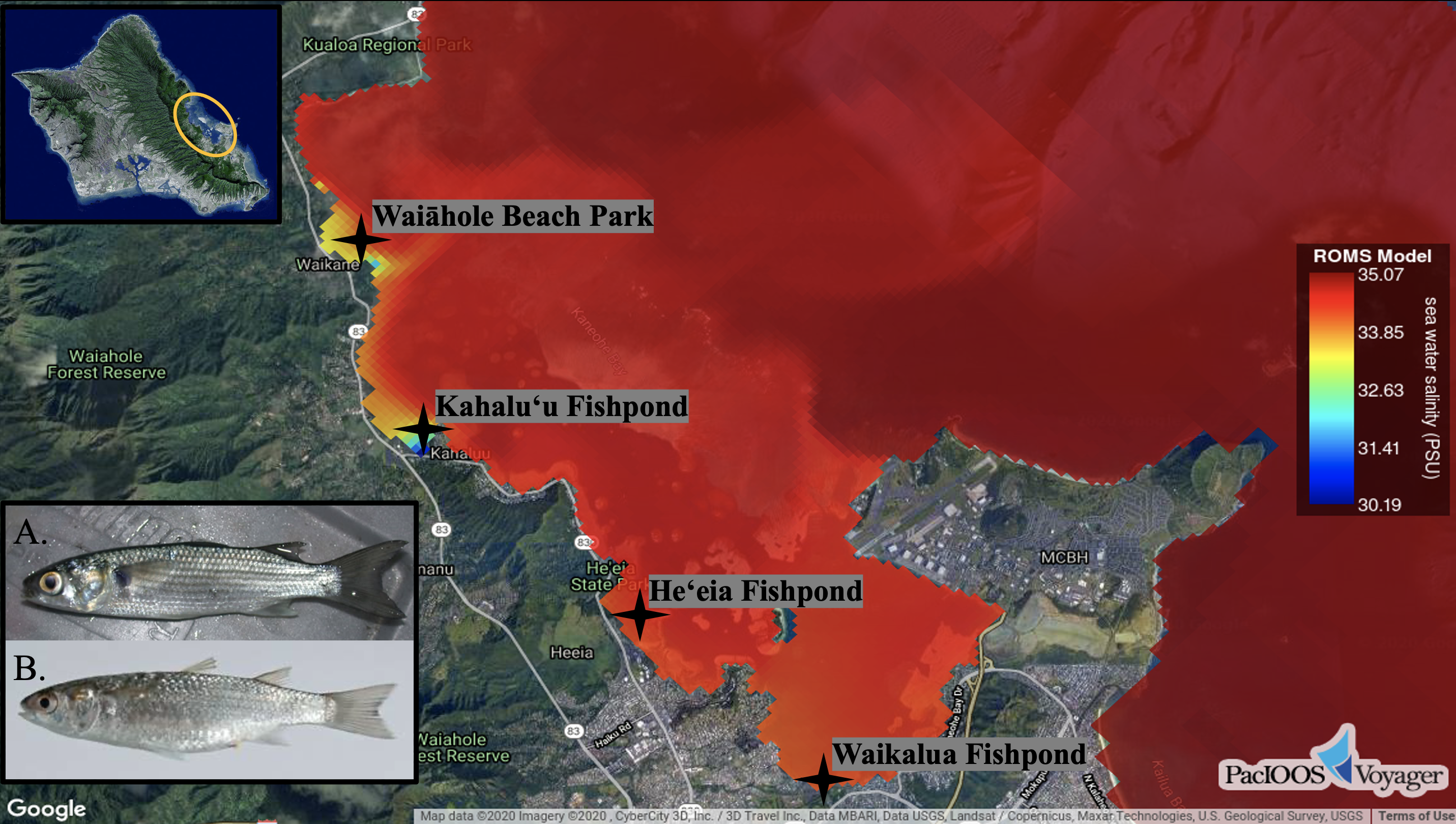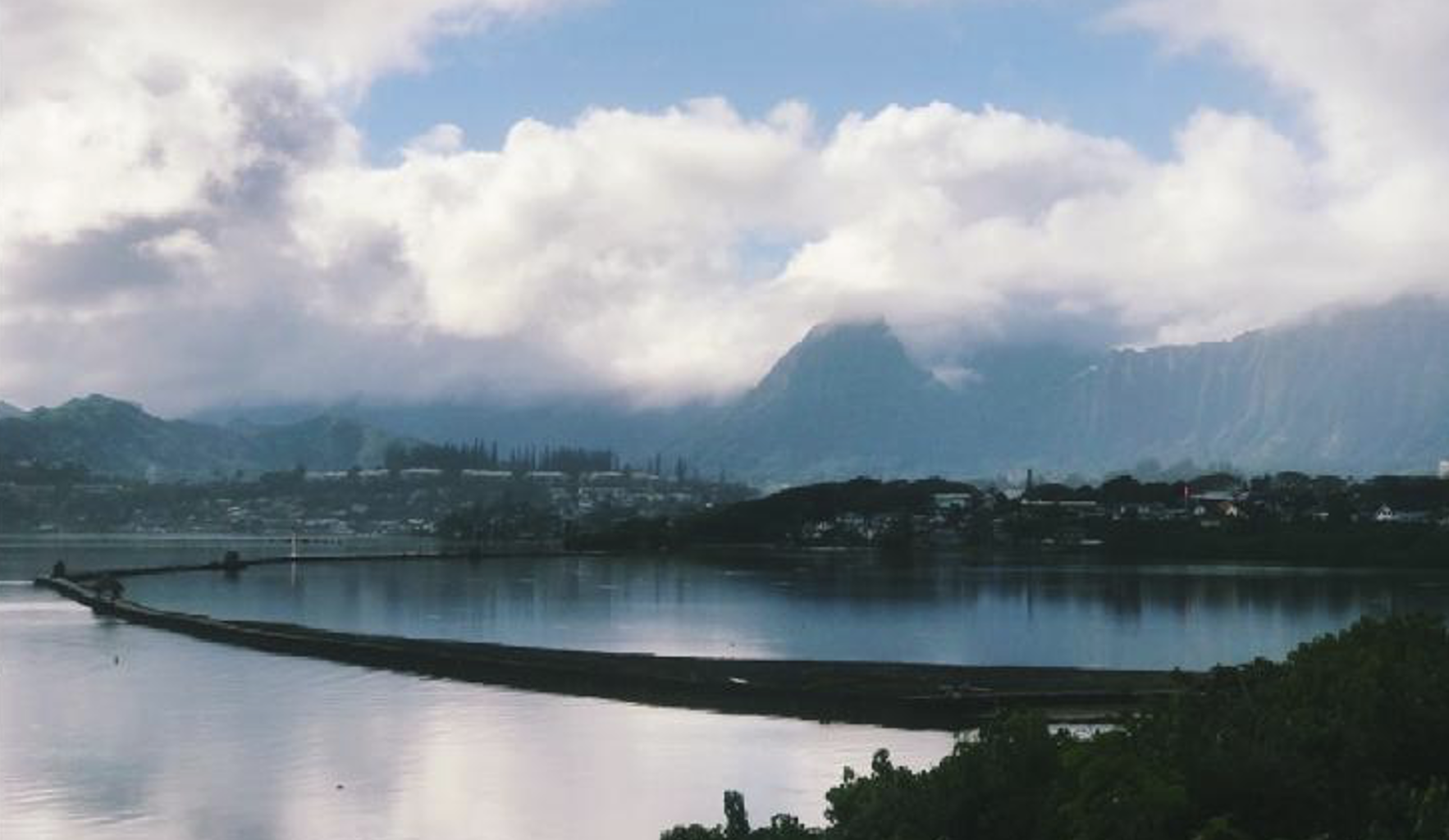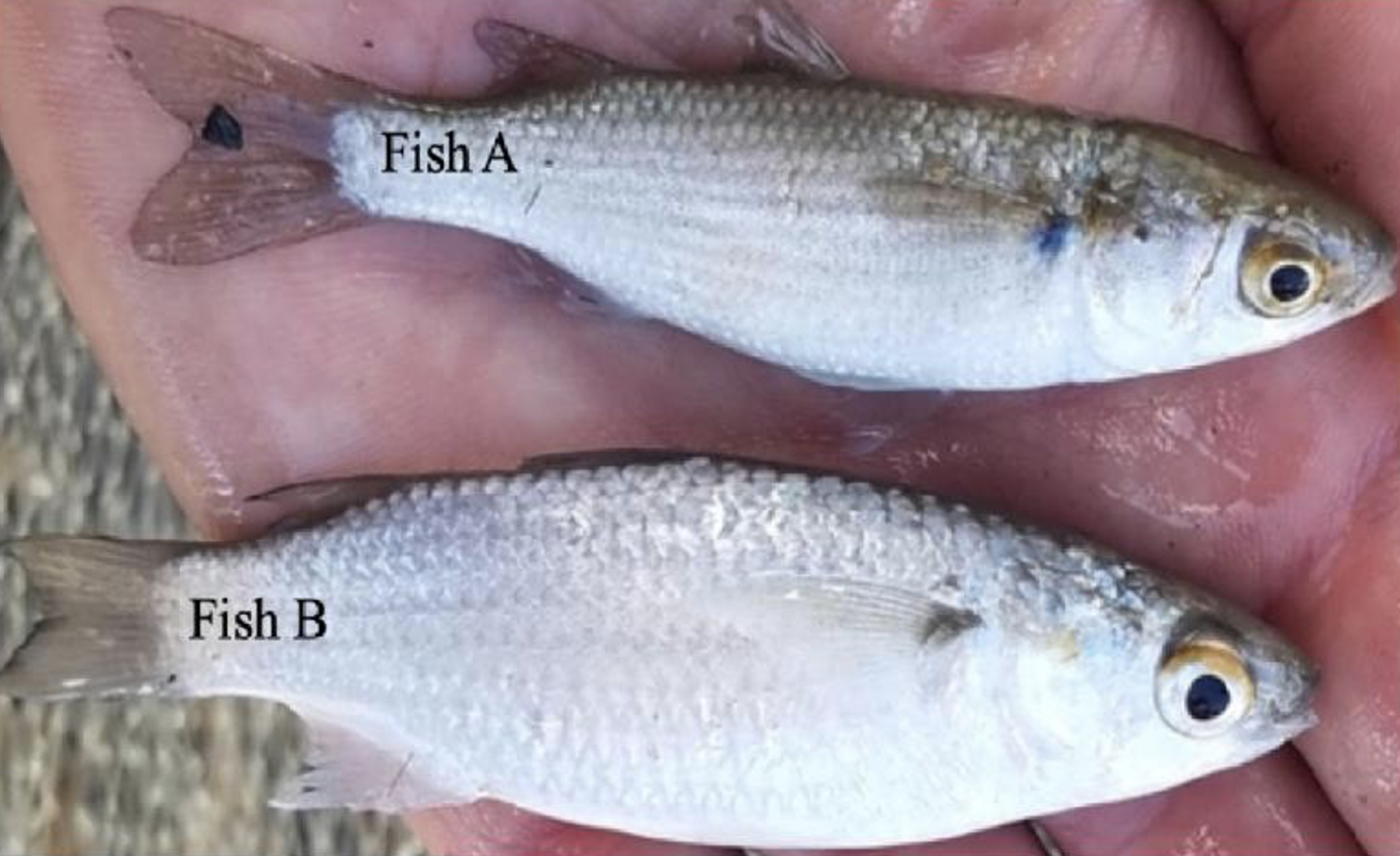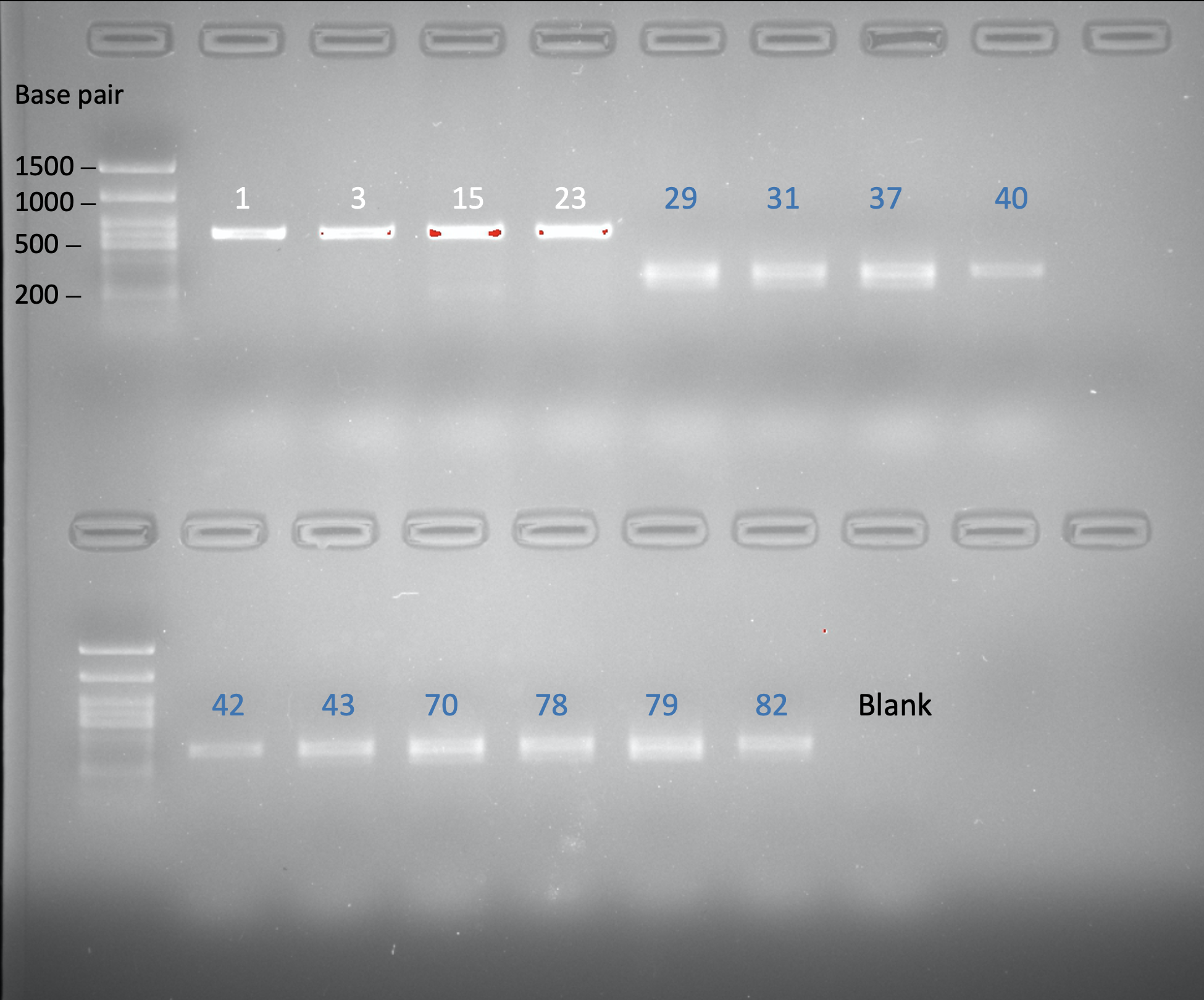About This Project
Native mullets (ʻamaʻama) are vital to Hawaiian aquaculture. In Kāne‘ohe Bay, yearly recruit abundance is declining; the accidental introduction of kanda mullet may further inhibit native mullet survivorship. A three-primer PCR method I designed facilitates non-destructive, relatively cheap rapid genetic identification of recruit-sized mullet in order to identify recruitment patterns of morphologically similar native and introduced mullet.
Ask the Scientists
Join The DiscussionWhat is the context of this research?
The native mullet, ʻamaʻama (Mugil cephalus), is a culturally significant species in Hawaiʻi for aquaculture purposes. In Kāne‘ohe Bay, multiple stocking efforts of adults and recruits have been attempted without success, and focus has shifted to trying to understand population dynamics of wild stocks, including environmental forcing of competitive species interactions between ʻamaʻama and the accidentally introduced kanda mullet (Osteomugil engeli). Mullet recruits at sizes less than seven cm are nearly impossible to distinguish morphologically between species. In Hawaiʻi, ʻamaʻama reach sexual maturity at 28 cm and generally have just one or two large spawns during the winter months; the kanda mullet reach maturity at 14 cm and are hypothesized to spawn and recruit year-round.
What is the significance of this project?
Although 80% of marine organisms have a biphasic life cycle, and the majority of the larval phase have some pelagic component, larval dispersal and recruitment dynamics continue to be some of the least understood aspects of marine species’ life history. Since 1965, ‘ama‘ama recruit abundances in Kāne‘ohe Bay have been declining. Kāne‘ohe Bay is a semi-enclosed system with a natural gradient of freshwater input volume with highest influx in the North Bay and lowest in the South. I will take advantage of these characteristics to isolate and identify the potential drivers of recruitment decline in ‘ama‘ama populations.
What are the goals of the project?
My goal is to isolate factors influencing recruitment dynamics of mullets and distinguish differences in morphological characteristics of recruits for visual species identification at less than 7 cm. On a monthly basis, scoop nets will be used to target mullet recruits, where they will be measured, photographed, & fin clipped. The fin clips will be taken back to the Iacchei Lab for DNA extraction and PCR. I designed a three-primer method to target different-sized fragments of the COI gene of each mullet species (~529 bp for M. cephalus; ~239 bp for O. engeli). Gel electrophoresis will be used to separate the PCR-amplified gene regions and the size of the product band will indicate the species of each fin clip.
Budget
I will need scoop nets, buckets, forceps, scissors, and collection vials to collect mullet fish specimens. For the Genetics aspect of my project, I will need an OMEGA column-based DNA extraction kit as well as all necessary PCR reagents and gel electrophoresis products for proper species identifications. Ten percent of sampled individuals will need to be sequenced on an ABI-3130XL capillary sequencer at the University of Hawaiʻi, Manoa to confirm species identification made through agarose gel band size. The graduate student stipend will go to supporting the researcher throughout the duration of the project and the fishpond stipend will go to helping support the work done by fishpond caretakers (Paepae o Heʻeia, Kahaluʻu Fishpond, and Waikalua Loko Iʻa).
Endorsed by
 Project Timeline
Project Timeline
I plan to sample mullet recruits for one year and will pair my recruitment data with environmental data collected by Paepae ‘O Heʻeia, and the NERR monitoring stations in Kāne‘ohe Bay to investigate the potential drivers of recruitment for mullet. Following the completion of my Masters, I plan to pursue my doctorate degree at the University of Hawaiʻi, Manoa, where I will further examine community driven & meaningful research on small-scale Hawaiian fisheries.
Jan 26, 2022
Project Launched
Mar 27, 2022
Finish monthly sampling
Mar 31, 2022
Finish DNA extractions and PCR analysis
Apr 07, 2022
Finish analyzing data
Apr 14, 2022
Build a place-based recruitment calendar for mullet within Kāne‘ohe Bay
Meet the Team
Savannah Laliberte
After growing up in Pittsburgh Pennsylvania, I moved to Hawai‘i in August of 2015 to pursue a Bachelor’s degree in Marine Biology at Hawaiʻi Pacific University. During my time as an undergraduate at HPU, I was a voluntary laboratory assistant on the Seabird Tissue Archival and Monitoring Project (STAMP), a collaboration between the National Institute of Standards and Technology (NIST) and HPU to investigate environmental contaminates in seabird eggs. In addition to that, I participated in the Our Project in Hawaii’s Intertidal (OPIHI) internship through the University of Hawai‘i, Manoa Campus. During this internship, my cohort and I used stable isotopes as a tool to examine mullet food web dynamics in Heʻeia Fishpond.
Building upon my work done during the OPIHI internship, I decided to continue my education with HPU’s Master of Science Marine Science Program (MSMS) and my current research focuses on assessing mullet recruitment on a spatiotemporal scale within Kāne’ohe Bay. As an MSMS thesis-track student, I look forward to conducting science with a purpose that will push the boundaries of scientific knowledge, while also producing results that are directly tangible to local Hawaiian communities and the public.
Lab Notes
Nothing posted yet.
Additional Information




The value of ʻamaʻama was so great to Hawaiian communities that they are the primary species targeted for cultivation in Hawaiian fishponds around the state. Prior to Western contact, approximately 488 fishponds were located statewide to feed and connect communities around the islands. These fishponds also served as de facto marine protected areas, enclosing large stocks of reproductive adults spaced along estuarine coastlines. In conjunction with Western contact, fishponds around the state succumbing to urbanization, ʻamaʻama commercial productions declined from 485,531 lbs. to 1,200 lbs. in a span of 75 years due to the compounding threats of coastal urbanization, introductions of non-native species, and more recently, changes in water flow regimes due to a changing climate.
My interest in pursuing a career in applied research grew through my 2019 internship in the University of Hawaii’s Seagrant College program called Our Project in Hawaii’s Intertidal (OPIHI). During this research practicum, I learned ecological sampling techniques and Hawaiian cultural protocols. My cohort examined mullet food web dynamics in Heʻeia Fishpond, Kāneʻohe Bay. The caretakers of Heʻeia fishpond, Paepae o Heʻeia, have been working to restore the cultural and ecological services of the fishpond through their ʻĀina Momona program. They aim to maximize the abundance of food fishes (mullet) to sustain current and future generations. My research group used stable isotopes to investigate the differences in mullet diets at two sites in Heʻeia fishpond. Both native and introduced mullets appear to be targeting similar prey items at both sites around He’eia fishpond, which may suggest competitive exclusion between the species.
For my independent project within this broader research question, I assessed whether native mullet Mugil cephalus and/or introduced mullet Osteomugil engeli undergo ontogenetic shifts in dietary preference in relation to native Hawaiian size classes. Due to fish behavior, it was difficult to catch fish in the allotted semester for this project. Based on my results, a larger sample size was needed to further investigate ontogenetic shifts within these two mullet species.
Working with Paepae o Heʻeia has helped me grow as more than just a scientist. I previously had no understanding of the vast, vibrant culture whose values are the roots of local communities. In Hawaiian culture, one of the main values is to malama the ʻāina (take care of the land). To do this Hawaiians take only what is needed from the environment and replenish what was taken to keep the ecosystems in balance and further sustain future generations to come. Conducting scientific research with the benefit of this cultural perspective fostered an indescribable appreciation for the interrelationships of environments from mauka to makai (land to sea). This experience allowed me to personally witness and understand the importance of integrating Western science approaches with indigenous cultural knowledge, and the necessity of conducting culturally appropriate and thoughtful science that aligns with the traditional beliefs and practices of the community I am working in. Inspired by my humbling OPIHI internship, I wanted to continue working on research projects that push the boundaries of scientific knowledge, but also produce results that are directly tangible to local community members and the public, especially the keiki (children).
Broader Impacts of My Project:
Results from my project will aid in a better understanding of mullet abundance patterns and the environmental drivers of their recruitment patterns. More specifically, because mullet are globally distributed species, results from my project could potentially have broad applicable principles and allow for comparisons between locations and varying estuarine ecosystems around the world. The three-primer technique will allow me to sample large numbers of recruits at a relatively inexpensive cost. Implementing this method to communities across the state could improve management efforts by allowing near-instant in situ identification of mullet species.
I want to produce results that are directly tangible to community members and the public. To give back to the community during my diet study in 2019, I taught 7th graders visiting Heʻeia fishpond about ontogenetic dietary shifts in mullet, using human baby food as a prop to illustrate ontogenetic diet shifts in humans to help them to better understand my project with the fishpond. In continuation, my primary outreach will be working with K-12 students in partnership with Paepae o He‘eia’s education team to develop lesson plans based off of my results. I loved seeing the excitement of the students when I presented the mullet diet study to them in a new compelling way, and I look forward to working with the education staff at Heʻeia to build more lessons like that. Through my thesis, I aim to link the place-based calendar I generate for recruitment in the bay to environmental parameters for each mullet species. The results of this study will allow for the assessment of management of mullet stocks within their respective estuaries. In turn, this will further the goal to provide a local sustainable food source for Hawaiʻi residents. This locally-sourced protein will supplement, if not supplant, Hawaii’s reliance on the U.S. Mainland and international sources, and improve our food security. The environmental conditions assessed in this study can be extrapolated to other locations in Hawaiʻi or to subsequent years and used as a hypothesis to test recruitment times and abundances for these species throughout Hawaiʻi with a changing climate. I will generate management recommendations for mullet aquaculture in the bay based off of my findings. In the process of completing this work, I plan to give multiple talks to the communities within the bay as well as present this work at academic conferences. Through this project I aim to educate people of all ages, in the communities around the islands on how to get more involved in their local community and help impact their future in a positive way.
Going forward, I want to pursue a career in estuarine and coastal research, specifically, with fishponds across Hawaiʻi, and build the knowledge and skillsets to achieve this goal. This grant will help me to achieve my goals by allowing me to explore recruitment of estuarine mullet species. As a minority science researcher from Pennsylvania, being inspired by Hawaiian cultural perspectives has allowed me to see the need to combine traditional Hawaiian science and western science to further build upon and advance our collaborative knowledge of these sensitive and important estuarine ecosystems.
Project Backers
- 16Backers
- 100%Funded
- $6,000Total Donations
- $375.00Average Donation


